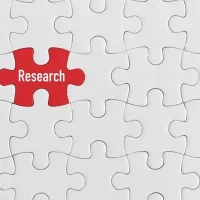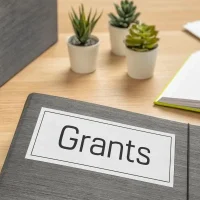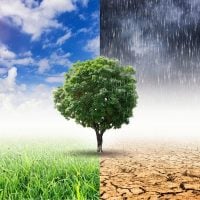In an era where natural disasters are becoming increasingly frequent and severe, the need for innovative disaster relief projects has never been more critical. Traditional methods of disaster response often fall short in addressing the complex needs of affected communities. Innovative projects can leverage technology, community engagement, and sustainable practices to create more effective and efficient responses.
For instance, the use of drones for delivering medical supplies to remote areas during a disaster can significantly reduce response times and save lives. By embracing innovation, NGOs can not only enhance their operational capabilities but also foster resilience within communities, enabling them to recover more swiftly and sustainably. Moreover, innovative disaster relief projects can serve as a catalyst for long-term development.
By integrating disaster preparedness into community planning and development initiatives, NGOs can help communities build resilience against future disasters. For example, projects that focus on training local populations in emergency response techniques or establishing early warning systems can empower communities to take charge of their own safety. This proactive approach not only mitigates the immediate impacts of disasters but also lays the groundwork for sustainable development, ensuring that communities are better equipped to handle future challenges.
Challenges in Securing Funding for NGOs
Securing funding for NGOs, particularly those focused on disaster relief, presents a myriad of challenges. One of the most significant hurdles is the competitive nature of grant applications. With numerous organizations vying for limited resources, it can be difficult for NGOs to stand out and demonstrate their unique value proposition.
Additionally, many funding bodies prioritize projects that align with their specific goals or areas of interest, which may not always coincide with the pressing needs of disaster-affected communities. This misalignment can lead to frustration and missed opportunities for vital funding. Another challenge is the often stringent reporting and accountability requirements imposed by funders.
While these measures are essential for ensuring responsible use of funds, they can also create a burden for NGOs, particularly smaller organizations with limited administrative capacity. The need for detailed financial reporting and impact assessments can divert valuable resources away from program implementation. Furthermore, the unpredictability of funding cycles can hinder long-term planning and sustainability efforts, leaving NGOs in a constant state of uncertainty as they strive to meet the immediate needs of those they serve.
Identifying Potential Funding Sources
To navigate the complex landscape of funding opportunities, NGOs must adopt a strategic approach to identifying potential sources of support. One effective strategy is to conduct thorough research on various funding bodies, including foundations, government agencies, and international organizations that have a history of supporting disaster relief initiatives. By understanding the priorities and funding criteria of these organizations, NGOs can tailor their proposals to align with their interests, increasing the likelihood of securing support.
Additionally, networking within the sector can uncover hidden funding opportunities. Engaging with other NGOs, attending conferences, and participating in workshops can provide valuable insights into emerging trends and potential funders. Collaborating with other organizations on joint proposals can also enhance credibility and broaden the scope of projects, making them more appealing to funders.
By fostering relationships within the philanthropic community, NGOs can tap into a wealth of knowledge and resources that can aid in their funding pursuits.
Tips for Writing Successful Grant Proposals
Crafting a compelling grant proposal is an art that requires careful attention to detail and a clear understanding of the funder’s priorities. One key tip is to start with a strong executive summary that succinctly outlines the project’s objectives, target population, and anticipated impact. This section should grab the reader’s attention and convey the urgency of the need being addressed.
A well-articulated problem statement that highlights the specific challenges faced by disaster-affected communities will set the stage for demonstrating how the proposed project offers a viable solution. Furthermore, it is essential to provide a detailed project plan that outlines the methodology, timeline, and budget. Funders want to see a clear roadmap that illustrates how the project will be implemented and evaluated.
Including measurable outcomes and indicators will help demonstrate accountability and allow funders to assess the project’s success. Additionally, incorporating testimonials or case studies from previous projects can lend credibility to the proposal and showcase the organization’s capacity to deliver results.
Leveraging Corporate Partnerships for Funding
Corporate partnerships can be a powerful avenue for securing funding and resources for disaster relief projects. Many companies are increasingly recognizing their corporate social responsibility (CSR) obligations and are eager to support initiatives that align with their values and business objectives. By establishing partnerships with corporations, NGOs can access not only financial support but also in-kind contributions such as supplies, expertise, and volunteer manpower.
To effectively leverage corporate partnerships, NGOs should identify companies whose missions align with their own and propose mutually beneficial collaborations. For example, a technology company might be interested in partnering with an NGO focused on disaster response to develop innovative solutions for real-time data collection during emergencies. By presenting a clear value proposition that highlights how the partnership can enhance both parties’ impact, NGOs can create compelling cases for collaboration that resonate with corporate stakeholders.
Engaging with Individual Donors and Crowdfunding
In addition to institutional funding sources, individual donors play a crucial role in supporting disaster relief efforts. Engaging with individual donors requires a personalized approach that fosters connection and trust. Storytelling is an effective tool in this regard; sharing compelling narratives about the lives impacted by disasters and how donations will make a difference can inspire individuals to contribute.
Utilizing social media platforms to share these stories can amplify reach and encourage grassroots support. Crowdfunding has emerged as an innovative way for NGOs to mobilize resources quickly in response to disasters. Platforms like GoFundMe or Kickstarter allow organizations to present their projects directly to potential donors, bypassing traditional funding channels.
To maximize success in crowdfunding campaigns, NGOs should set clear fundraising goals and timelines while actively promoting their campaigns through social media and email outreach. Engaging supporters by providing regular updates on progress and showcasing the impact of their contributions can help maintain momentum throughout the campaign.
The Role of Government Grants and Funding
Government grants represent a significant source of funding for disaster relief initiatives, often providing substantial financial support for large-scale projects. These grants may come from local, state, or federal agencies and are typically aimed at addressing specific needs within communities affected by disasters. To access these funds, NGOs must stay informed about available grant opportunities and understand the application processes involved.
Navigating government funding can be complex due to bureaucratic requirements and regulations. However, building relationships with government officials and agencies can facilitate access to these resources. Attending public meetings or forums where funding opportunities are discussed can provide valuable insights into upcoming grants and priorities.
Additionally, collaborating with other organizations or coalitions can strengthen proposals by demonstrating broad community support for initiatives aimed at disaster relief.
Ensuring Transparency and Accountability in Fund Management
Transparency and accountability are paramount in managing funds received from various sources, especially in the context of disaster relief where trust is essential for donor engagement. NGOs must establish robust financial management systems that track expenditures accurately and report on how funds are utilized. Regular financial audits conducted by independent third parties can enhance credibility and reassure donors that their contributions are being used effectively.
Moreover, communicating openly with stakeholders about project progress and financial status fosters trust and encourages continued support. Providing detailed reports on outcomes achieved through funded projects not only demonstrates accountability but also showcases the impact of donor contributions. By prioritizing transparency in fund management practices, NGOs can build lasting relationships with donors while enhancing their reputation within the philanthropic community.
In conclusion, navigating the landscape of funding for innovative disaster relief projects requires strategic planning, effective communication, and a commitment to transparency. By understanding the challenges faced in securing funding, identifying potential sources, crafting compelling proposals, leveraging partnerships, engaging individual donors, tapping into government grants, and ensuring accountability in fund management, NGOs can enhance their capacity to respond effectively to disasters while fostering resilience within affected communities.
In the realm of funding opportunities for NGOs focused on innovative disaster relief projects, it’s essential to explore various programs that support community resilience and leadership. One such initiative is the Women Increased Leadership for Resilient and Peaceful Societies Programme in Moldova. This program emphasizes the importance of empowering women to take on leadership roles in building resilient communities, which is a crucial aspect of effective disaster relief and recovery efforts. By fostering leadership and resilience, such programs contribute significantly to the broader goal of enhancing disaster preparedness and response capabilities.









































